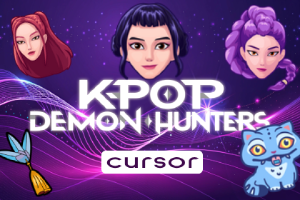
Experts agree its selective use of gugak reflects both strategy and artistry
With the breakout Netflix hit “KPop Demon Hunters” — whose soundtrack “Golden” became the first K-pop song by a female singer to reach No. 1 on the Billboard Hot 100 — global viewers found themselves captivated not only by the storyline but also by the film’s rich infusion of Korean traditional culture. Among the highlights was the soundtrack’s use of gugak elements, particularly in “Hunter Mantra,” a track built on traditional timbres and chanting techniques.
Ejae, one of the three songwriters behind “Golden,” said she is “especially proud of ‘Hunter Mantra,’” adding that she was excited to showcase “not only Korea’s mainstream music but also its rich traditional sounds” through the piece. Her comment reflects a broader movement within the industry: K-pop’s deepening engagement with Korea’s musical heritage as the genre continues its global ascent.
Collaborations between K-pop and gugak are not new. Over the past decade, groups such as BTS, Stray Kids and Ateez have consistently incorporated traditional elements to craft distinctive sonic identities. Songs such as BTS’ “Idol,” Agust D’s “Daechwita,” Ateez’s “The Real,” Stray Kids’ “Thunderous” and “HOP” have each showcased different ways traditional percussion, scales and vocal techniques can be fused into modern pop production.
As more idol groups weave gugak into their discography, a broader debate has emerged: Should K-pop incorporate more traditional influences — or even root its musical identity in gugak?

What makes music “Korean”?
To some scholars, this question reflects a persistent but problematic idea about cultural authenticity. Stephanie Choi, assistant professor of ethnomusicology at the University of Colorado Boulder, warns against essentialist thinking.
“There is a popular belief that only traditional culture is authentic. However, culture is not a fixed entity; it is a process that continually transforms across time and space,” she said. “It is an essentialist view to claim that only gugak is truly Korean and that K-pop is less authentic. Even within traditional music, the idea of ‘Koreanness’ has never been fixed.”
Choi notes that while traditional elements can serve as meaningful artistic or branding tools, their inclusion does not determine whether music is “authentically” Korean. Still, she recognizes their strategic potential: “For K-pop idols, emphasizing their cultural roots while introducing new musical forms to global audiences can be an effective marketing strategy.”
For Kim Sun-hong, a Ph.D. candidate at the University of Michigan, deeper engagement with traditional music offers opportunities but also raises concerns.
“If K-pop as a production seeks the identity of Koreanness, it could trace back to the roots of musical identity in that gugak can be one of the options for that,” she said. “I am excited about the opportunity for gugak to be publicized to an international community through K-pop, but I am also concerned about the cases of how limited the representation of gugak can be within the scope of musicians’ usage and understanding of it.”
Kim notes that K-pop’s production system — which heavily targets global and especially Anglophone audiences — shapes how traditional elements are perceived.

“In this sense, musical elements of gugak in K-pop songs will be heard as ‘exotic’ to mainstream audiences,” she said. “K-pop idols who incorporated gugak in their songs can be understood as engaging in career development by doing something ‘unique’ in a neoliberal society, or their intention behind it can be their musical inspiration or homage to their ethnic heritage, such as Shin Jung-hyeon’s ‘Mi-in,’ regardless of how successful the song became in the global market.”
Tool for storytelling, not identity
For those directly involved in K-pop production, the fusion with gugak is less about defining the genre’s identity and more about expanding its expressive range. An official from one of the major K-pop agencies says traditional elements provide both aesthetic and emotional depth.
“Many artists borrow traditional components as musical or performance concepts, not only expressing them visually but also supporting them sonically, and I believe this enhances the overall expressive power,” the official said. “For songs whose lyrics and themes are rooted in Korean language and ideas, rich traditional sounds offer listeners at home and abroad an approach that feels both familiar and refreshing.”
Rather than predicting an explosion of gugak-based K-pop, the insider expects steady, ongoing experimentation.
“It depends on how often one believes this is already happening,” they said. “I think many globally active idol groups are already consistently presenting music and performances that use traditional elements within their discographies. So while I cannot guarantee that the amount of such music will increase, I believe the attempts and integrations will continue much as they are now.”
– – –
“Next Frontier” is a series examining how K-pop is incorporating elements of traditional Korean music and how gugak musicians are exploring contemporary music genres, including K-pop, in their unique music language. From expert insights to artists blending gugak and pop, the series looks into how musicians are redefining K-pop’s sound and identity. — Ed.
